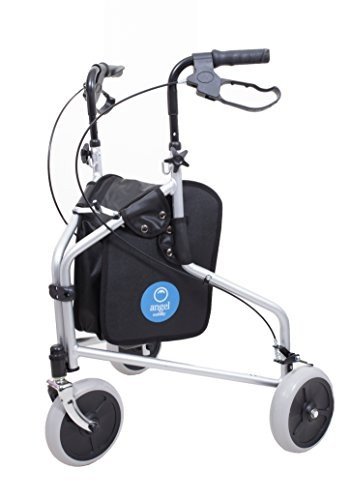Mobility Scooters: A Comprehensive Guide
Mobility scooters have become a necessary mode of transportation for numerous people dealing with mobility difficulties. This short article explores the different facets of mobility scooters, including their types, benefits, functions, and a guide for prospective buyers.
Comprehending Mobility Scooters
Mobility scooters are electrically powered devices created for individuals with restricted mobility. They provide a way of transport for individuals who might have trouble strolling but still wish to maintain their self-reliance. They are available in numerous styles and features to cater to a wide variety of requirements.
Kinds Of Mobility Scooters
Mobility scooters can typically be categorized into three main types:
| Type | Description | Best For |
|---|---|---|
| Compact Scooters | These are small and lightweight, perfect for indoors and short journeys. | Users with limited storage space or those who travel typically. |
| Mid-size Scooters | A balance in between portability and stability, appropriate for both indoor and outdoor usage. | Those who require to cover a variety of terrains. |
| Durable Scooters | Big and robust, designed for rugged outdoor use and much heavier individuals. | Users requiring extra weight capability or going off-road. |
Key Features of Mobility Scooters
The option of mobility scooter frequently depends upon the features that align with individual needs. Here are a few of the crucial features to think about:
- Weight Capacity: Mobility scooters feature different weight limitations. It is important to select a scooter that can effectively support the user's weight.
- Range: The range a scooter can take a trip on a single charge varies. Depending upon user requirements, one may go with scooters with a variety of approximately 40 miles.
- Speed: Most mobility scooters can reach speeds between 4 to 8 mph. Consider what speed is comfortable and safe for the intended environment.
- Turning Radius: A compact turning radius is essential for indoor usage, permitting simpler navigation in tight areas.
- Battery Type: The type of batteries used can affect the scooter's performance. Lead-acid and lithium-ion batteries are the most common.
Benefits of Using Mobility Scooters
The advantages of mobility scooters extend beyond simply transport. Some crucial benefits consist of:
- Independence: Users can browse their environment without depending on caregivers, promoting self-reliance and self-confidence.
- Health Benefits: Using a scooter can motivate outside activity, leading to physical and psychological health improvements by reducing sensations of seclusion.
- Convenience: Scooters can easily be run in different environments, whether indoors, in shopping center, or outdoors.
Essential Considerations When Buying a Mobility Scooter
When acquiring a mobility scooter, several factors to consider can assist guarantee that you select the best design:
Assess Individual Needs:
- Mobility level: Consider how much help the person will need.
- Series of usage: Determine where the scooter will primarily be utilized (inside your home, outdoors, on rough surfaces, and so on).
Test Drive:
- Always test drive numerous designs to discover an appropriate fit. Take mobility scooters sale of comfort, ease of steering, and the scooter's responsiveness.
Evaluation Safety Features:
- Look for scooters with sufficient safety functions like lights, indicators, and anti-tip styles.
Check Warranty and Service Options:
- A dependable guarantee and readily available service options are important for long-lasting usage.
FAQs about Mobility Scooters
1. How quickly do mobility scooters go?Mobility scooters generally have speeds varying from 4 to 8 mph, with most created for security rather than high-speed travel. 2. Are there weight limitations on mobility scooters?Yes, mobility
scooters come with particular weight limitations, often varying from
250 lbs to over 500 lbs, depending upon the model. 3. Can mobility scooters be used indoors?Certain models, especially compact scooters, are specifically created for
indoor use and are easier to steer in tight areas. 4. How typically do the batteries need to be replaced?Battery life can vary based upon use, however normally, with appropriate care, batteries may last between 1 to 3 years before needing replacement
. 5. Are mobility scooters covered by insurance?Coverage can differ, but some insurance coverage plans, including Medicare and Medicaid, might cover part of the expense. It's suggested to inspect with private insurance providers. Mobility scooters function as a
valuable tool for lots of individuals, allowing them to maintain
their liberty and self-reliance. By understanding the different types and functions of mobility scooters, individuals can make informed choices tailored to their specific needs.
Whether utilized for errands, socializing, or leisurely activities, mobility scooters can improve the lifestyle for those with mobility limitations. Buying a mobility scooter is a choice that can considerably impact a person's daily life. For that reason, people need to thoroughly assess their options and choose a design that best aligns with their lifestyle and mobility requirements
.

